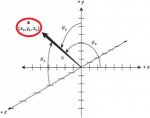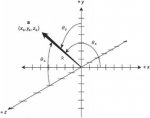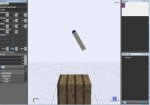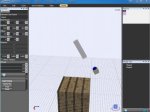[solved] How do you calculate a point in 3D Space?

I am killing myself trying to figure out how to move 3 objects relative to each other in 3d space. It is an Arm,Forearm,hand object. when the arm rotates the forearm needs to stay connected to it, and then again with the hand needing to stay connected to the forearm.
The X,Y,Z angles (in radians) the arm is pointing as well as the length of the arm (R) are known.
What formula do I use to solve for "a" (x,y,z) coordinates?
Thank you!
EDIT: fixed my wording

I am killing myself trying to figure out how to move 3 objects relative to each other in 3d space. It is an Arm,Forearm,hand object. when the arm rotates the forearm needs to stay connected to it, and then again with the hand needing to stay connected to the forearm.
The X,Y,Z angles (in radians) the arm is pointing as well as the length of the arm (R) are known.
What formula do I use to solve for "a" (x,y,z) coordinates?
Thank you!
EDIT: fixed my wording
Attachments
Last edited:





